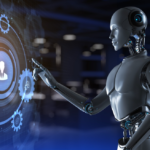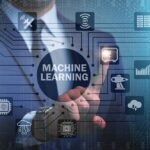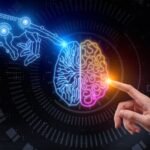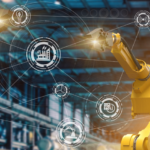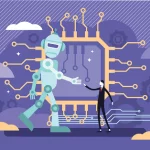Groundbreaking soft valve technology enabling sensing and control integration in soft robots
Soft inflatable robots have emerged as a promising solution for applications that require both safety and adaptability. However, integrating sensing and control systems into these robots has been a challenge without compromising their soft and flexible nature. To address this issue, a collaborative research team led by Professor Jiyun Kim from the Department of New Material Engineering and Professor Jonbum Bae from the Department of Mechanical Engineering at UNIST (Ulsan National Institute of Science and Technology) has developed groundbreaking “soft valve” technology. This innovation provides an all-in-one solution by seamlessly integrating sensors and control valves while preserving the softness and form factor of these robots.
Traditionally, soft robots incorporated rigid electronic components for sensing purposes. However, the team’s research introduces a novel approach to overcome this limitation. They have created soft analogs of sensors and control valves that operate without electricity. These tube-shaped components serve a dual function: detecting external stimuli and precisely controlling movement using air pressure alone. By eliminating the need for electricity-dependent components, these all-soft valves enable safe operation underwater or in environments where electrical sparks may pose risks, while also reducing the overall weight of robotic systems. Additionally, each component is cost-effective, with an estimated cost of approximately 800 Korean Won.
Professor Kim explained the significance of their work, stating, “Previous soft robots had flexible bodies but relied on hard electronic parts for stimulus detection sensors and drive control units. Our study focuses on making both sensors and drive control parts using soft materials.”
The research team demonstrated various applications of this innovative technology. They developed universal tongs capable of delicately handling fragile items like potato chips, preventing breakage that can occur with conventional rigid robot hands. Additionally, they used these all-soft components to create wearable elbow assist robots designed to reduce muscle strain during repetitive or strenuous arm movements. The elbow support automatically adjusts according to the angle of the user’s arm, resulting in an average 63% reduction in elbow strain when wearing the robot.
The operation of the soft valve relies on the flow of air within a tube-shaped structure. When tension is applied to one end of the tube, a helically wound thread inside compresses it, thereby controlling the inflow and outflow of air. This accordion-like motion allows for precise and flexible movements without the need for electrical power.
Furthermore, the research team demonstrated that by programming different structures or numbers of threads within the tube, they could accurately control variations in airflow. This programmability enables customized adjustments to suit specific situations and requirements, providing flexibility in the response of the driving unit even when consistent external forces are applied to the end of the tube.
Professor Bae expressed excitement about this development, saying, “These newly developed components can be easily employed using material programming alone, eliminating the need for electronic devices. This breakthrough will significantly contribute to advancements in various wearable systems.”
This groundbreaking soft valve technology represents a significant step toward fully soft, electronics-free robots capable of autonomous operation, a crucial milestone for enhancing safety and adaptability across various industries. The research was supported by various organizations, including Korea’s National Research Foundation (NRF), Korea Institute of Materials Science (KIMS), and Korea Evaluation Institute of Industrial Technology.










